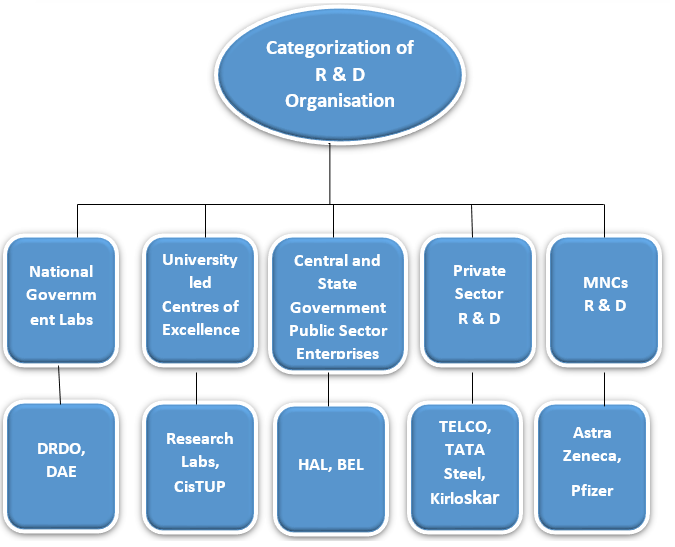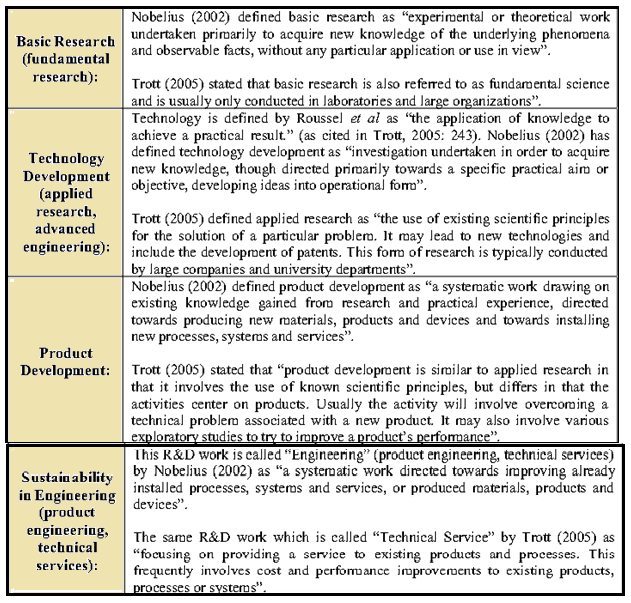R&D management
In intricate business climate, there is a necessity for companies to become innovative in developing new products, and making product improvements. Therefore, R&D has immense significance in organization to gain competitive advantage. Research and development activities contribute significantly to the overall performance of organization. Research and Development management involves in supervising and controlling the research and development department of a given company. Research and development is the method of developing novel ideas to patent, market or sell those ideas. Research and development exists in many industries but it has vital role in the technology industry and the drug industry where there is a constant need for newer, better and more innovative projects and need of extensive research and work to make those products a functional reality. There are a number of different things that go into research and development management, depending on the industry and the type of project being done. One of the main elements of research and development management involves overseeing, managing and allocating the budget assigned to given research projects. Research and development, when conducted for profit companies, is designed to produce a product that will be money-making for the company when patented or sold.
Theoretical framework of Research and Development (R&D) management: Scientists stated that Research and Development has traditionally been regarded as the management of scientific research and the development of new products and it is abbreviated to R&D (Trott, 2005: 243). R&D is the determined and systematic use of scientific knowledge to improve man's lot even though some of its manifestations do not meet with universal approval" (Twiss, 1992). "To develop new knowledge and apply scientific or engineering knowledge to connect the knowledge in one field to that in others" (Roussel et al., 1991). Other theorists defined R&D, as R&D refers to "standard research and development activity devoted to increasing scientific or technical knowledge and the application of that knowledge to the creation of new and improved products and processes" (OECD, 2005). According to Hagedoorn (2001), R&D collaborations as "parts of a relatively large and diverse group of inter-firm relationships that one finds in between standard market transactions of both related and unrelated companies"
When reviewing historical records, it has been demonstrated that After World War II (1945), research and development has vital role in providing firms with competitive advantage. Technical developments in various industries such as chemicals, electronics, automotive and pharmaceuticals led to the expansion of many new products, which produced rapid growth though technology was competent of almost everything. Since the mid-1960s the Research and Development viewpoint has become the overriding approach for technology development and investments in the scientific infrastructures. In the decade of 1990s, scientists were more inclined to appraise shortcomings and limitations of this linear model. Yet, due to lack of alternative models for innovation, the linear R&D has been able to continue to act like a default model for innovation. The conventional aspect of research and development has been to triumph over real technological problems, which consequently leads to business opportunities and competitive advantages over one's competitors.
Objectives and types of R&D: The prime aim of research and development (R&D) is to develop the current technologies offered by an organisation or to develop innovations that make stronger the organisation's status in the marketplace. The sector includes many companies that are devoted to research and development businesses that focuses on particular fields or areas of work. For example, organisations work in the communication, information systems and electronic markets. The objective of educational and institutional research and development (R&D) is to get new knowledge, which may or may not be applied to practical uses. On the contrary, the purpose of industrial R&D is to achieve new knowledge appropriate to the company's business needs that ultimately will result in new or improved products, processes, systems or services that can increase the company's sales and profits.
R&D functions require initial elaboration and clarification associated with some scientific terms such as research, development science, technology, and engineering also. Research is vital part of any organization. It is described as the systematic approach to create new knowledge. In fact, research may involve both new science and the use of old science to fabricate a new product. It is occasionally difficult to establish when research ends and development starts. Research is a continuous process of inquiry in which a detailed examination aimed at the discovery of facts, review of conventional theory, or application of these theories is conducted. In another concept, development is methodological use of science and technology knowledge to fulfil certain goals and requirement. Science is the basic platform for knowledge. Whereas technology is described as a market application which is dependent on science. It is an application of knowledge to bring practical change in human environment. It is done by using material, tools, techniques and source of power. Final concept is engineering that is mainly a combination of measurement and execution of methods. It is a manufacturing base to enhance scalability of product (Akhilesh, 2014).
Research and development has grown in majority of nations around the globe and focused on developing national strategy. R&D centres are classified based on the types of research activity that is undertaken (Akhilesh, 2014):
- R&D with in organization.
- R&D activities are collaborated, contracted and located in university system.
- Independent R&D laboratories.
- Captive R&D which are contracted and outsourced within or outside the country.

Above categorization provides list of some organizations. There are national government laboratories focusing on the defence research or atomic energy related activities.
Various forms of R&D: Research and development has numerous types such as basic research, technology development, product development and sustainability in engineering. According to the National Science Foundation, there are three types of R&D such as basic research, applied research, and development.
Basic research has aim of deep knowledge or understanding of the subject under study, instead of a practical application. It is applied to the industrial sector and described as research that advances scientific knowledge but does not have specific business objectives. This type of research is driven by scientist's curiosity in specific question. The main motivation is to expand man's knowledge instead of creating or inventing something. There is no obvious business value of this research. For example, invention related universe, genetic code. Basic research is chiefly undertaken by the public sector, the other two forms are central to the competitiveness of most firms. In initial stages of technological activity enterprises do not need formal R&D departments (World Investment Report 2005).
Applied research is focussed to obtain knowledge or understanding required for determining the ways by which a recognized and specific need may be fulfilled. It refers to scientific study and research that seeks to solve practical problems. In industry, applied research includes investigations directed to the discovery of new specific knowledge having specific commercial objectives with respect to products, processes, or services.
Development is the methodical utilization of the knowledge or understanding gained from research toward the invention of useful materials, devices, systems, or methods, including design and development of prototypes and processes.
Forms of R&D
In the arena of basic research, and some parts of applied research, relating to the knowledge and concepts, the developed product is less tangible in these phases. Alternatively, development, technical service and few areas of the applied research relates to (physical) products in a highly tangible manner. Conventionally, it has been visualized as a linear process, that shift from research to engineering and then to manufacturing.
The R&D Continuum (Source: Trott,2005)
There are number of industries with an especially high level of research and development such as:
- Pharmaceuticals
- Aerospace
- Consumer electronics
- Computers
- Communications
R&D management is the arena of designing and leading R&D processes, managing R&D organizations, and guarantee smooth shift of new know-how and technology to other groups or departments involved in improvement. In managing R&D, project of innovation management fulfil the task of technology management. This includes the operations of basic research, fundamental research, advanced development, concept development, and technology transfer.
Academicians and practitioners emphasized that research and development managers must make certain that funds are allocated only to products expected to produce a good return-on-investment and that any funds invested are reasonable in light of what the ROI will ultimately be if the product is developed properly. Research and development management also involves in supervising the process of R&D and ensuring that all requirements are complied with. This is particularly significant in many sectors such as drug industry, where there are generally strict controls put in place by the government before a drug can be approved for use and sale.
In R&D management, various tools are used such as
- Simultaneous Engineering
- TRIZ
- Voice of the customer
- PACE, Stage–gate model
- Technology intelligence
Challenges of R&D: The process of managing R&D activities challenges has been many in approach since last decade as globalisation process also added new dimension to competitiveness. Challenges in R&D can be internal or external. Internal factors that impact R&D include resource mobilization, competency development, allocation and resources and prioritisation, effective execution of projects, and fast conversation of ideas into production service. External challenges of R&D include policies of the government, regulators and regulating agencies such as enforcement. Public concern about environmental use of scarce and protected resources, and sustainability also pose challenge to R&D. Besides these challenges, R&D managers also face challenge in making good decisions to buy and develop new technology, set short and long term priorities, and attraction and retention of highly talented experts (Akhilesh, 2014).
To summarize, Research and Development, briefly called 'R&D' is technical or scientific exploration that is carried out with a vision to pioneer new or improved products and services. R&D activities are major driving force of economy. Academicians stated that Research and Development has crucial role in the innovation process. It is basically an investment in technology and future capabilities which is changed into new products, processes, and services.

